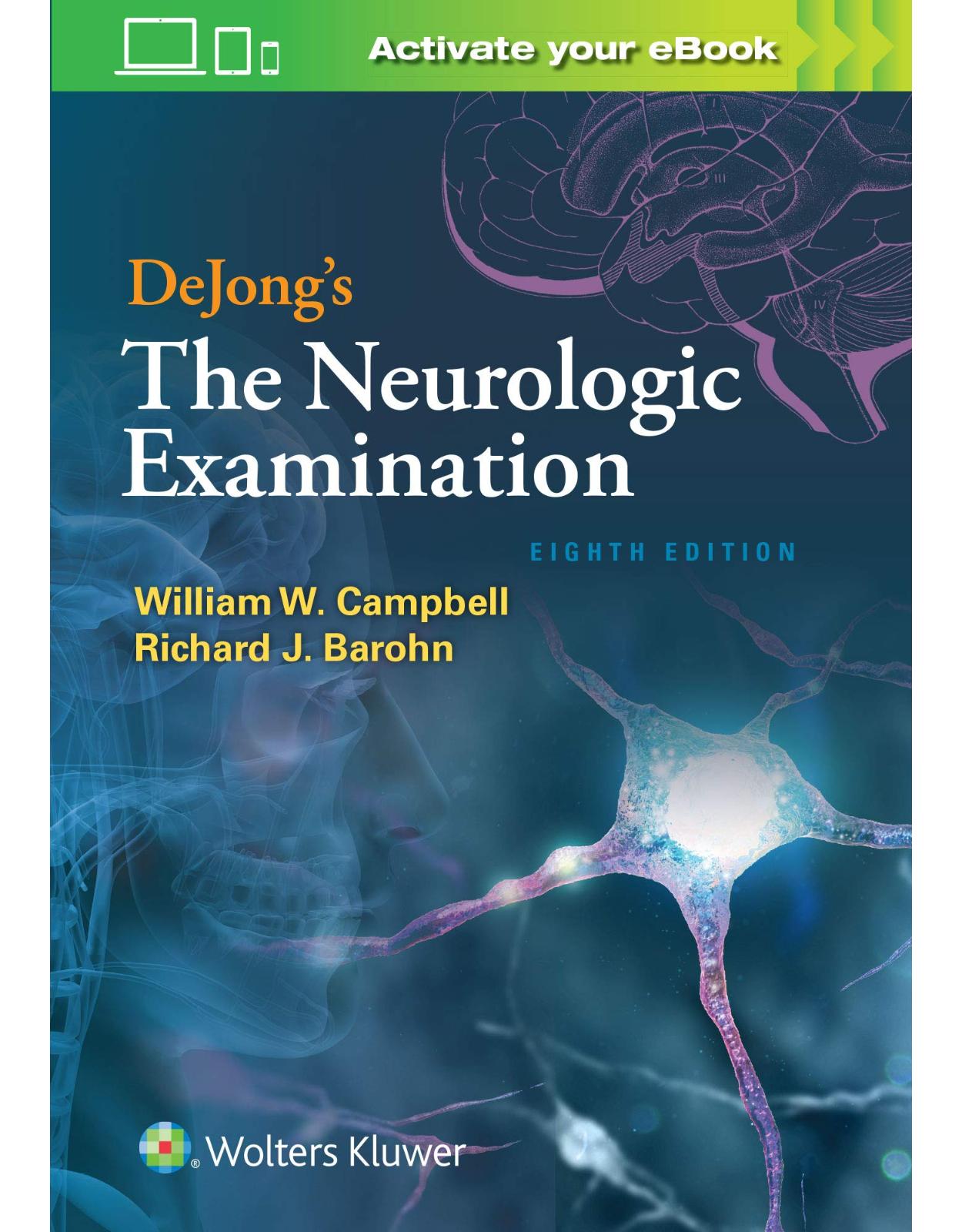
DeJong’s The Neurologic Examination. Eighth edition
Livrare gratis la comenzi peste 500 RON. Pentru celelalte comenzi livrarea este 20 RON.
Disponibilitate: La comanda in aproximativ 4 saptamani
Editura: LWW
Limba: Engleza
Nr. pagini: 850
Coperta: Hardback
Dimensiuni: 15.3 x 4.1 x 22.9 cm
An aparitie: 2019
Description:
This popular reference is the definitive guide on exam techniques for neurology residents, fellows, and practitioners, integrating details of neuroanatomy and diagnosis in an easy-to-read, easy-to-follow format. A new clinical focus, new videos online, and new illustrations makeDeJong’s The Neurologic Examination, 8th Edition,even more useful for mastery of this complex area. Anatomical and exam illustrations ensure proper technique, and illustrative case studies and tables summarize differentials and clinical findings.
Table of Contents:
SECTION A Introduction
CHAPTER 1 Introduction
SECTION B History, Physical Examination, and Overview of the Neurologic Examination
CHAPTER 2 Overview of the Nervous System
NEUROEMBRYOLOGY
BONY ANATOMY
MENINGES
THE CEREBRAL HEMISPHERES
BASAL GANGLIA
THALAMUS
BRAINSTEM
CEREBELLUM
SPINAL CORD
CENTRAL NERVOUS SYSTEM BLOOD SUPPLY
CHAPTER 3 The Neurologic History
THE PRESENTING COMPLAINT AND THE PRESENT ILLNESS
RETAKING THE HISTORY
THE PAST MEDICAL HISTORY
THE FAMILY HISTORY
SOCIAL HISTORY
REVIEW OF SYSTEMS
HISTORY IN SOME COMMON CONDITIONS
CHAPTER 4 The General Physical Examination
VITAL SIGNS
GENERAL APPEARANCE
HEAD
EYES
EARS
NOSE, MOUTH, AND THROAT
NECK
RESPIRATORY SYSTEM AND THORAX
CARDIOVASCULAR SYSTEM
ABDOMEN
GENITALIA AND RECTUM
SPINE
EXTREMITIES
SKIN
HAIR AND NAILS
NODES
CHAPTER 5 General Outline of the Neurologic Examination
SECTION C Mental Status Examination and Higher Cortical Functions
CHAPTER 6 Gross and Microscopic Anatomy of the Cerebral Hemispheres
CORTICAL LAYERS
COMMISSURAL FIBERS
PROJECTION FIBERS
THE INTERNAL CAPSULE
THALAMUS
CHAPTER 7 Functions of the Cerebral Cortex and Regional Cerebral Diagnosis
THE FRONTAL LOBES
THE PREFRONTAL AREA
FRONTAL MOTOR AREAS
THE PARIETAL LOBES
THE OCCIPITAL LOBES
THE TEMPORAL LOBES
CHAPTER 8 The Mental Status Examination
MENTAL STATUS EXAMINATION
ORIENTATION AND ATTENTION
LANGUAGE
MEMORY
CONSTRUCTIONAL TASKS
CALCULATIONS
ABSTRACT THINKING
INSIGHT AND JUDGMENT
FRONTAL LOBE (EXECUTIVE) FUNCTION
OTHER MENTAL STATUS TESTS
ABNORMAL MENTAL STATUS EXAMINATION
ALZHEIMER’S DISEASE
DEMENTIA WITH LEWY BODIES
FRONTOTEMPORAL DEMENTIA
CHAPTER 9 Disorders of Speech and Language
ANATOMY AND PHYSIOLOGY OF ARTICULATION
TYPES OF SPEECH SOUNDS
EXAMINATION OF ARTICULATION
DISORDERS OF ARTICULATION
NONORGANIC (FUNCTIONAL) SPEECH DISORDERS
APHASIA
ANATOMY OF THE LANGUAGE CENTERS
EXAMINATION OF THE PATIENT WITH APHASIA
SPONTANEOUS SPEECH
COMPREHENSION
NAMING
REPETITION
WRITING
READING
CLASSIFICATION OF THE APHASIAS
Broca’s Aphasia (Nonfluent, Expressive, Motor, Anterior, Prerolandic, Executive)
Wernicke’s Aphasia (Fluent, Receptive, Sensory, Posterior, Postrolandic)
Global (Total, Expressive-Receptive, Complete) Aphasia
Conduction (Associative, Commissural, Central, Deep) Aphasia
Anomic (Amnesic, Amnestic, Nominal) Aphasia
Transcortical (Extrasylvian) Aphasia
Subcortical Aphasia
NONDOMINANT HEMISPHERE LANGUAGE DISTURBANCES
ALEXIA AND AGRAPHIA
AMUSIA
SECTION D The Cranial Nerves
CHAPTER 10 Agnosia, Apraxia, and Related Disorders of Higher Cortical Function
DISCONNECTION SYNDROMES
Attentional Deficits
Alien Hand Syndrome
CHAPTER 11 An Overview of Brainstem and Cranial Nerve Anatomy
EMBRYOLOGY OF THE BRAINSTEM
External Anatomy
Brainstem Organization
Reticular Formation
Brainstem Nuclei
Long Tracts
Cross-Sectional Anatomy
Midbrain
Pons
Medulla
OVERVIEW OF CRANIAL NERVES III–XII
Oculomotor (CN III)
Trochlear (CN IV)
Trigeminal (CN V)
Abducens (CN VI)
Facial (CN VII)
Vestibulocochlear (CN VIII)
Glossopharyngeal (CN IX)
Vagus (CN X)
Accessory (CN XI)
Hypoglossal (CN XII)
CHAPTER 12 The Olfactory Nerve
ANATOMY AND PHYSIOLOGY
CLINICAL EXAMINATION
DISORDERS OF OLFACTORY FUNCTION
CHAPTER 13 The Optic Nerve
ANATOMY AND PHYSIOLOGY
Optic Reflexes
CLINICAL EXAMINATION AND DISORDERS OF FUNCTION
Visual Acuity
Color Vision; Day and Night Vision
The Visual Fields
Visual Field Abnormalities
The Ophthalmoscopic Examination
LOCALIZATION AND DISORDERS OF VISUAL FUNCTION
Prechiasmal Lesions
Distal (Prechiasmal) Optic Neuropathy
Chiasmal Lesions
Retrochiasmal Lesions
Other Abnormalities of the Ocular Fundus
CHAPTER 14 The Ocular Motor Nerves
ANATOMY AND PHYSIOLOGY
THE OCULOMOTOR NERVE
THE TROCHLEAR NERVE
THE ABDUCENS NERVE
SUPRANUCLEAR CONTROL OF GAZE
THE MEDIAL LONGITUDINAL FASCICULUS
SYMPATHETIC INNERVATION
CLINICAL EXAMINATION AND DISORDERS OF FUNCTION OF THE OCULAR MOTOR NERVES AND THE CERVICAL SYMPATHETIC SYSTEM
EXOPHTHALMOS AND ENOPHTHALMOS
THE EYELIDS
Lid Retraction
The Pupils
Size
Shape
Equality
Position
The Pupillary Reflexes
The Light Reflex
The Accommodation Reflex
Other Pupillary Reflexes
Effects of Drugs on the Pupil
DISORDERS OF THE PUPIL
Large Pupils
Small Pupils
HORNER’S SYNDROME
Argyll Robertson Pupil
Pupils with Abnormal Reactions
Light-Near Dissociation
Afferent Pupillary Defect
Unusual Disorders of the Pupil
OCULAR MOTILITY
EXAMINATION OF EYE MOVEMENTS
EVALUATION OF OCULAR MALALIGNMENT
Subjective Tests
Objective Tests
Cover Tests
COMITANCE
OPTOKINETIC (OPTICOKINETIC, OPTOMOTOR) NYSTAGMUS
DISORDERED OCULAR MOTILITY
PERIPHERAL DISORDERS OF OCULAR MOTILITY
Orbital Disease
Muscle Disease
Neuromuscular Transmission Disorders
INDIVIDUAL NERVE PALSIES
The Oculomotor Nerve
Localization of Oculomotor Nerve Lesions
The Trochlear Nerve
The Abducens Nerve
Other Causes of Abduction Impairment
CENTRAL DISORDERS OF OCULAR MOTILITY
Internuclear Ophthalmoplegia
Gaze Palsies and Gaze Deviations
One-and-a-Half Syndrome
Parinaud’s Syndrome
Progressive Supranuclear Palsy
Other Disorders of Vertical Gaze
Nystagmus and Other Ocular Oscillations
Physiologic Nystagmus
Voluntary Nystagmus
Congenital Nystagmus
Ocular Disease
CHAPTER 15 The Trigeminal Nerve
ANATOMY AND PHYSIOLOGY
The Motor Portion
The Sensory Portion
The Trigeminal Divisions
CLINICAL EXAMINATION
Examination of the Motor Functions
Examination of the Sensory Functions
Examination of the Reflexes
The Jaw, Masseter, or Mandibular Reflex
The Corneal Reflex
The Sternutatory (Nasal, Sneeze) Reflex
Other Trigeminal Mediated Reflexes
Disorders of Function
Motor Dysfunction
Sensory Dysfunction
Postherpetic Neuralgia
Facial Numbness
Other Trigeminal Nerve Disorders
Localization of Trigeminal Nerve Lesions
CHAPTER 16 The Facial Nerve
ANATOMY AND PHYSIOLOGY
The Motor Portion
The Nervus Intermedius
Course and Branches of the Facial Nerve
CLINICAL EXAMINATION
Examination of the Motor Functions
Examination of the Reflexes
Examination of the Sensory Functions
Examination of the Secretory Functions
DISORDERS OF FUNCTION
Facial Weakness
Peripheral Facial Palsy
Localization of Peripheral Facial Nerve Palsy
Bell’s Palsy
Other Causes of Peripheral Facial Weakness
Facial Weakness of Central Origin
Abnormal Facial Movements
Hemifacial Spasm
Spastic Paretic Facial Contracture
Facial Myokymia
Other Abnormal Facial Movements
Sensory Involvement
Secretory Changes
CHAPTER 17 The Acoustic (Vestibulocochlear) Nerve
THE COCHLEAR NERVE
Anatomy and Physiology
Clinical Examination
Disorders of Function
Tinnitus
The Vestibular Nerve
Vestibular Physiology
Clinical Examination
Vestibulospinal Reflexes
Vestibulo-Ocular Reflexes
Oculocephalic Reflex (Doll’s Eye Test)
Head Thrust Test
Dynamic Visual Acuity
Caloric Tests
Nystagmus
Spontaneous Nystagmus
Positional Nystagmus
Clinical Investigation
Disorders of Function
CHAPTER 18 The Glossopharyngeal and Vagus Nerves
THE GLOSSOPHARYNGEAL NERVE
Anatomy and Physiology
Clinical Examination
Disorders of Function
THE VAGUS NERVE
Anatomy and Physiology
The Motor Portion
The Parasympathetic Portion
The Sensory Portion
Normal Functions
Clinical Examination
Examination of the Motor Functions
Examination of the Autonomic Functions
Examination of the Sensory Functions
Examination of the Reflexes
Disorders of Function
CHAPTER 19 The Spinal Accessory Nerve
ANATOMY AND PHYSIOLOGY
CLINICAL EXAMINATION
DISORDERS OF FUNCTION
CHAPTER 20 The Hypoglossal Nerve
ANATOMY AND PHYSIOLOGY
CLINICAL EXAMINATION
DISORDERS OF FUNCTION
CHAPTER 21 Brainstem and Multiple Cranial Nerve Syndromes
BRAINSTEM SYNDROMES
CLASSICAL BRAINSTEM SYNDROMES
ANATOMIC BRAINSTEM SYNDROMES
Nonvascular Brainstem Disorders
Bulbar Palsy
MULTIPLE CRANIAL NERVE PALSIES
DISORDERS OF CRANIAL NERVE GROUPS
Cavernous Sinus Syndrome
Cerebellopontine Angle Syndrome
Lower Cranial Nerve Syndromes
SECTION E The Motor System
CHAPTER 22 Overview of the Motor System
LEVELS OF MOTOR ACTIVITY
OVERVIEW OF CLINICAL MANIFESTATIONS OF DISEASE OF THE MOTOR SYSTEM
Motor Strength and Power
Generalized Weakness
Localized Weakness
Other Motor System Abnormalities
Muscle Volume and Contour
Abnormal Movements
Coordination
CHAPTER 23 The Motor Unit Level
THE MOTOR UNIT
Myotomes
Microanatomy of the Peripheral Nerve
Physiology of the Peripheral Nerve
Anatomy and Physiology of the Neuromuscular Junction
Anatomy and Physiology of Muscle
CHAPTER 24 The Spinal Cord Level
BLOOD SUPPLY
PHYSIOLOGY AND PATHOPHYSIOLOGY
CLINICAL MANIFESTATIONS OF DISINHIBITED SPINAL CORD SEGMENTS
SPINAL CORD SYNDROMES AND DISORDERS
CHAPTER 25 The Corticospinal (Pyramidal) Level
ANATOMY AND PHYSIOLOGY
CLINICAL MANIFESTATIONS OF DISEASE OF THE CORTICOSPINAL LEVEL
CHAPTER 26 The Extrapyramidal Level
ANATOMY AND PHYSIOLOGY
Striatal Afferents
Striatal Efferents
Pallidal Afferents
Pallidal Efferents
Subthalamic Nucleus
Substantia Nigra
BASAL GANGLIA PHYSIOLOGY
BASAL GANGLIA PATHOPHYSIOLOGY
OTHER BASAL GANGLIA FUNCTIONS
CHAPTER 27 Motor Strength and Power
STRENGTH SCALES
PATTERNS OF WEAKNESS
Generalized Weakness
Focal Weakness
NONORGANIC (FUNCTIONAL) WEAKNESS
EXAMINATION OF MOTOR STRENGTH AND POWER
EXAMINATION OF SPECIFIC MOVEMENTS AND MUSCLES
Examination of Movements and Muscles of the Neck
Examination of Movements and Muscles of the Upper Extremities
The Shoulder
Scapulohumeral Rhythm
The Scapular Muscles
Winging of the Scapula
The Glenohumeral Joint
The Rotator Cuff
The Elbow
The Wrist
The Hands and Fingers
Flexion of the Fingers
Extension of the Fingers
The Thumb and Its Muscles
Examination of Movements and Muscles of the Thorax, Abdomen, and Trunk
The Muscles of the Thorax
The Muscles of the Abdomen
The Muscles of the Pelvis
The Muscles of the Spine
Examination of the Movements and Muscles of the Lower Extremities
The Hip Joint
The Knee Joint
The Ankle Joint
Muscles of the Foot and Toes
EXAMINATION FOR SUBTLE HEMIPARESIS
CHAPTER 28 Muscle Tone
EXAMINATION OF TONE
The Babinski Tonus Test
The Head-Dropping Test
Pendulousness of the Legs
The Shoulder-Shaking Test
The Arm-Dropping Test
Hand Position
MYOTATIC IRRITABILITY, MYOEDEMA, AND TENDERNESS
ABNORMALITIES OF TONE
Hypotonia
Hypertonia
Extrapyramidal Rigidity
Spasticity
Catatonic Rigidity
Decerebrate and Decorticate Rigidity
Voluntary Rigidity
Involuntary Rigidity
Reflex Rigidity
Myotonia
Other Types of Rigidity
CHAPTER 29 Muscle Volume and Contour
EXAMINATION OF MUSCLE VOLUME AND CONTOUR
ABNORMALITIES OF VOLUME AND CONTOUR
Muscular Atrophy
Neurogenic Atrophy
Other Varieties of Muscular Atrophy
Muscular Hypertrophy and Pseudohypertrophy
CHAPTER 30 Abnormalities of Movement
HYPOKINETIC MOVEMENT DISORDERS
Parkinson’s Disease
Multisystem Atrophy
Progressive Supranuclear Palsy
Corticobasal Syndrome
Diffuse Lewy Body Disease
Wilson’s Disease
Pantothenate Kinase–Associated Neurodegeneration
Dentatorubropallidoluysian Atrophy
HYPERKINETIC MOVEMENT DISORDERS
TREMOR
Parkinsonian Tremor
Essential Tremor
Other Forms of Tremor
CHOREA
Huntington’s Disease
Other Forms of Chorea
ATHETOSIS
DYSTONIA
HEMIBALLISMUS
DYSKINESIAS
OROFACIAL DYSKINESIAS
MYOCLONUS
ASTERIXIS
MYORHYTHMIA
TICS
AKATHISIA
STEREOTYPY
HYPEREKPLEXIA
SLEEP-RELATED DYSKINESIAS
FASCICULATIONS
MYOKYMIA
STIFF-PERSON SYNDROME
SPASMS
OTHER HYPERKINESIAS
FUNCTIONAL MOVEMENT DISORDERS
SECTION F The Sensory System
CHAPTER 31 Overview of the Sensory System
SENSORY RECEPTORS
NERVE FIBER CLASSIFICATION
DERMATOMES
ANATOMY OF THE POSTERIOR ROOT
CLINICAL EXAMINATION
CHAPTER 32 The Exteroceptive Sensations
PAIN AND TEMPERATURE SENSATION
Anatomy and Physiology
Clinical Examination
TACTILE SENSATION
Anatomy and Physiology
Clinical Examination
CHAPTER 33 The Proprioceptive Sensations
ANATOMY
SENSES OF MOTION AND POSITION
SENSE OF VIBRATION (PALLESTHESIA)
PRESSURE SENSATION
DEEP PAIN SENSE OR PRESSURE PAIN
CHAPTER 34 The Interoceptive, or Visceral, Sensations
CHAPTER 35 Cerebral Sensory Functions
CHAPTER 36 Sensory Localization
NONORGANIC (FUNCTIONAL) SENSORY LOSS
SECTION G The Reflexes
CHAPTER 37 Introduction to the Reflexes
CHAPTER 38 The Deep Tendon or Muscle Stretch Reflexes
THE UPPER-EXTREMITY REFLEXES
The Biceps Reflex
The Triceps Reflex
The Brachioradialis (Radial Periosteal or Supinator) Reflex
The Finger Flexor Reflex (Wartenberg’s Sign)
The Deltoid Reflex
The Pectoralis Reflex
The Clavicle Reflex
The Pronator Reflex
TRUNK REFLEXES
The Abdominal Muscle (Deep Abdominal) Reflexes
The Iliac Reflexes
The Symphysis Pubis Reflexes
THE LOWER-EXTREMITY REFLEXES
The Patellar Reflex (Quadriceps Reflex, Knee Jerk)
The Achilles Reflex (Ankle Jerk, Triceps Surae Reflex)
The Adductor Reflex (Obturator Nerve, L2-L4)
The Medial Hamstring (Internal Hamstring) Reflex
The Lateral Hamstring (External Hamstring) Reflex
The Peroneal (Tibialis Anterior) Reflex
The Plantar Muscle Reflexes
INTERPRETATION OF THE DEEP TENDON (MUSCLE STRETCH) REFLEXES
ABNORMALITIES OF THE DEEP TENDON (MUSCLE STRETCH) REFLEXES
Hypoactive Reflexes
Hyperactive Reflexes
Inverted (Paradoxic, Indirect) Reflexes
CHAPTER 39 The Superficial (Cutaneous) Reflexes
THE SUPERFICIAL REFLEXES OF THE UPPER EXTREMITIES
The Palmar Reflex
The Scapular or Interscapular Reflex
THE SUPERFICIAL ABDOMINAL REFLEXES
THE SUPERFICIAL REFLEXES OF THE LOWER EXTREMITIES
The Cremasteric Reflex
The Gluteal Reflex
The Plantar Reflex
The Superficial Anal Reflex
Bulbocavernosus Reflex
ABNORMALITIES OF THE SUPERFICIAL REFLEXES
CHAPTER 40 Pathologic Reflexes
PATHOLOGIC REFLEXES IN THE LOWER EXTREMITIES
Corticospinal Responses Characterized in the Main by Extension (Dorsiflexion) of the Toes
Problems in Interpreting the Plantar Response
Corticospinal Tract Responses Characterized by Plantar Flexion of the Toes
Other Lower-Extremity Pathologic Reflexes
PATHOLOGIC REFLEXES IN THE UPPER EXTREMITIES
The Grasp (Forced Grasping) Reflex
The Palmomental Reflex of Marinesco-Radovici
The Hoffmann and Trömner Signs and the Flexor Reflexes of the Fingers and Hand
Other Upper-Extremity Corticospinal Reflexes
OTHER FRONTAL RELEASE SIGNS
CLONUS
CHAPTER 41 Postural and Righting Reflexes
POSTURAL AND RIGHTING REFLEXES IN INFANCY AND CHILDHOOD
The Moro Reflex
Landau Reflex
Tonic Neck Reflexes
The Neck Righting Response
The Parachute Response
The Placing Reaction
Supporting and Stepping Reactions
DECEREBRATE AND DECORTICATE RIGIDITY
CHAPTER 42 Associated Movements
PHYSIOLOGIC ASSOCIATED MOVEMENTS
PATHOLOGIC ASSOCIATED MOVEMENTS
Generalized Associated Movements
Symmetric (Imitative or Contralateral) Associated Movements (Mirror Movements)
Coordinated Associated Movements
Coordinated Associated Movements in the Paretic Limb
Contralateral Coordinated Associated Movements
Loss of Coordinated Associated Movements
OTHER CHANGES IN MOTOR FUNCTION
SECTION H Coordination and Gait
CHAPTER 43 Cerebellar Function
ANATOMY
Gross Anatomy
Microscopic Anatomy
CLINICAL MANIFESTATIONS OF CEREBELLAR DYSFUNCTION
Dyssynergia
Dysmetria
Agonist-Antagonist Coordination
Tremor
Hypotonia
Dysarthria
Nystagmus
Other Abnormalities
EXAMINATION OF COORDINATION AND CEREBELLAR FUNCTION
Equilibratory Coordination
Nonequilibratory Coordination
CEREBELLAR SYNDROMES
Midline Syndrome
Hemispheric Syndrome
Diffuse Cerebellar Dysfunction
Sensory Ataxia
Other Abnormalities
CEREBELLAR DISORDERS
CHAPTER 44 Gait and Station
EXAMINATION OF STATION
The Romberg Sign
PHYSIOLOGY OF GAIT
EXAMINATION OF GAIT
ABNORMAL GAITS
Cerebellar Ataxia
Sensory Ataxia
The Gait of Spastic Hemiparesis
Spastic Gait, Scissoring
The Spastic-Ataxic Gait
The Parkinsonian Gait
Frontal Lobe Gait Disorders
Marche à Petits Pas
Gait Apraxia
Gait of Normal Pressure Hydrocephalus
Cautious (Senile) Gait
Steppage Gait
The Myopathic (Waddling) Gait
Hyperkinetic Gait
Gaits Associated with Focal Weakness
Other Gait Disorders
NONNEUROLOGIC GAIT DISORDERS
NONORGANIC (FUNCTIONAL) GAIT ABNORMALITIES
SECTION I The Autonomic and Peripheral Nervous Systems
CHAPTER 45 The Autonomic Nervous System
THE PERIPHERAL AUTONOMIC NERVOUS SYSTEM
Autonomic Afferents
Neurotransmitters
The Physiology of the Peripheral Autonomic Nervous System
THE CENTRAL REGULATION OF AUTONOMIC FUNCTION
The Hypothalamus
Other Components of the Central Autonomic Network
EXAMINATION
Autonomic Function Testing
DISORDERS OF THE AUTONOMIC NERVOUS SYSTEM
The Bladder
Sexual Function
CHAPTER 46 Peripheral Neuroanatomy and Focal Neuropathies
PERIPHERAL NEUROANATOMY
Cervical Plexus
Brachial Plexus
LOWER-EXTREMITY NERVES
The Lumbosacral Plexus
SECTION J Orthopedic Neurology
CHAPTER 47 Neck and Back Pain
CLINICAL PATHOANATOMY OF THE SPINE
The Intervertebral Disc
The Spinal Roots
NECK AND ARM PAIN
CERVICAL RADICULOPATHY
Clinical Signs and Symptoms in Cervical Radiculopathy
Individual Root Lesions
LUMBOSACRAL RADICULOPATHY
Clinical Signs and Symptoms in Lumbosacral Radiculopathy
Individual Root Lesions
Spinal Stenosis
Conus Medullaris and Cauda Equina Lesions
THORACIC RADICULOPATHY
CHAPTER 48 Other Musculoskeletal Disorders
THE NECK
THE SHOULDER
Anatomy
The Painful Shoulder
History
Examination
THE ELBOW
THE WRIST AND HAND
THE LOWER EXTREMITY
SECTION K Circulation and Cerebrospinal Fluid
CHAPTER 49 The Blood Supply of the Brain
THE CEREBRAL ARTERIES
Carotid Artery
Vertebrobasilar System
Border Zone (Watershed) Areas
THE CEREBRAL VEINS AND THE VENOUS SINUSES
NEUROVASCULAR EXAMINATION
CHAPTER 50 The Ventricular System and the Cerebrospinal Fluid
CEREBROSPINAL FLUID CIRCULATION
CEREBROSPINAL FLUID FUNCTIONS
BLOOD-BRAIN BARRIER
LUMBAR PUNCTURE
INCREASED INTRACRANIAL PRESSURE
Hydrocephalus
Cerebral Edema
Clinical Manifestations of Increased Intracranial Pressure
SECTION L Special Methods of Examination
CHAPTER 51 The Examination in Coma
THE ANATOMY OF CONSCIOUSNESS
INITIAL MANAGEMENT OF COMA
DIAGNOSTIC ASSESSMENT
History
General Physical Examination
Neurologic Examination
DIFFERENTIAL DIAGNOSIS OF COMA
Structural Lesions
Metabolic Encephalopathy
Seizure Disorders
Locked-in Syndrome
The Vegetative State
Psychogenic Unresponsiveness
Brain Death
CHAPTER 52 Miscellaneous Neurologic Signs
SIGNS OF MENINGEAL IRRITATION
Nuchal (Cervical) Rigidity
Kernig’s Sign
Brudzinski’s Neck Sign
Other Meningeal Signs
SIGNS OF TETANY
Chvostek’s Sign
Trousseau’s Sign
SECTION M Diagnosis and Localization of Neurologic Disease
CHAPTER 53 Diagnostic Reasoning and Neurologic Differential Diagnosis
NEUROLOGIC DIFFERENTIAL DIAGNOSIS
ANATOMICAL DIAGNOSIS
CLINICAL MANIFESTATIONS OF DISEASE
Myopathy
Neuromuscular Junction Disorders
Peripheral Neuropathy
Plexopathy
Radiculopathy
Neuronopathy
Myelopathy
Brainstem Disease
Cranial Neuropathy
Cerebellar Disease
Basal Ganglia Disorders
Cerebral Hemisphere Disorders
Multifocal/Diffuse Disorders
Disorders of the Meninges, Ventricular System, and Intracranial Pressure
Disorders of the Skull and Vertebral Column
Disorders of the Vascular System
DIFFERENTIAL DIAGNOSIS BY ETIOLOGY
Neoplasms
Vascular Disease
Intracranial Infections
Inflammatory and Autoimmune Disorders
Trauma
Pharmaceuticals and Other Chemical Agents
Substance Abuse Disorders
Toxins
Metabolic Disorders
Demyelinating Disorders
Congenital and Developmental Disorders
Genetic Disorders
Degenerative Diseases
Disorders Due to Physical Agents
Environmental Neurology
Mitochondriopathies
Channelopathies
Paroxysmal Disorders
Complications of Systemic Conditions
Nonorganic and Psychiatric Disease
INDEX
| An aparitie | 2019 |
| Autor | William W. Campbell, Richard J. Barohn M.D. |
| Dimensiuni | 15.3 x 4.1 x 22.9 cm |
| Editura | LWW |
| Format | Hardback |
| ISBN | 9781496386168 |
| Limba | Engleza |
| Nr pag | 850 |

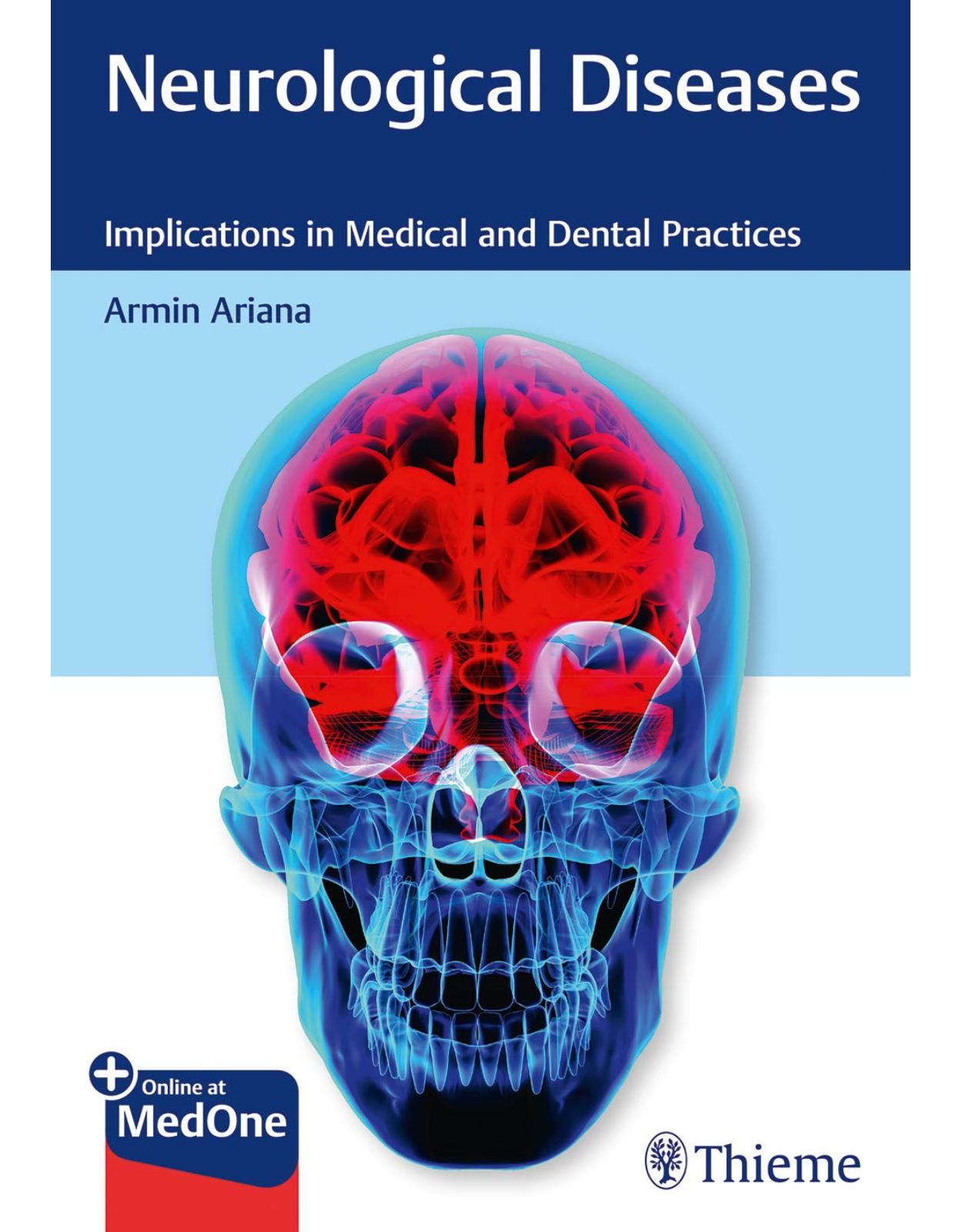
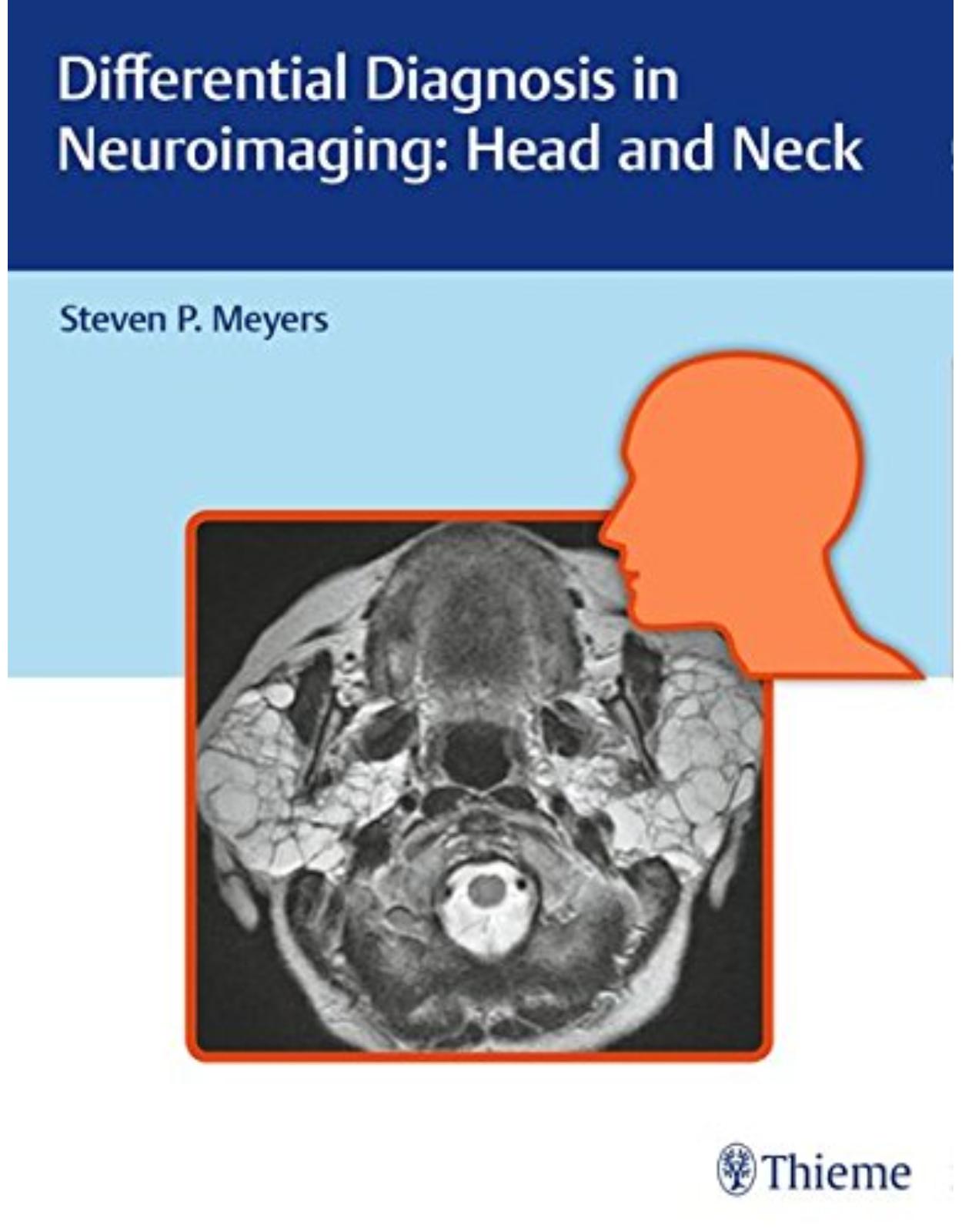
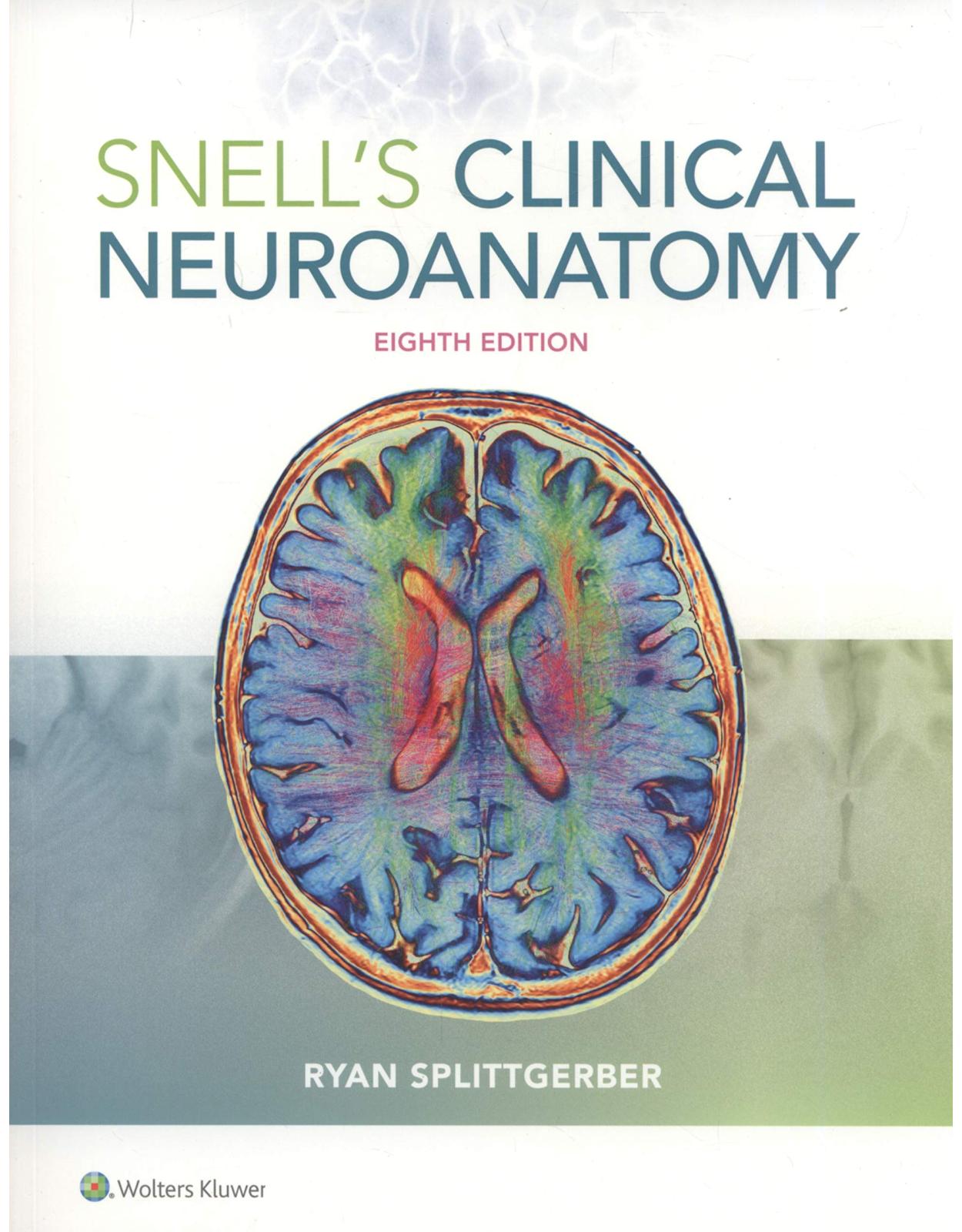
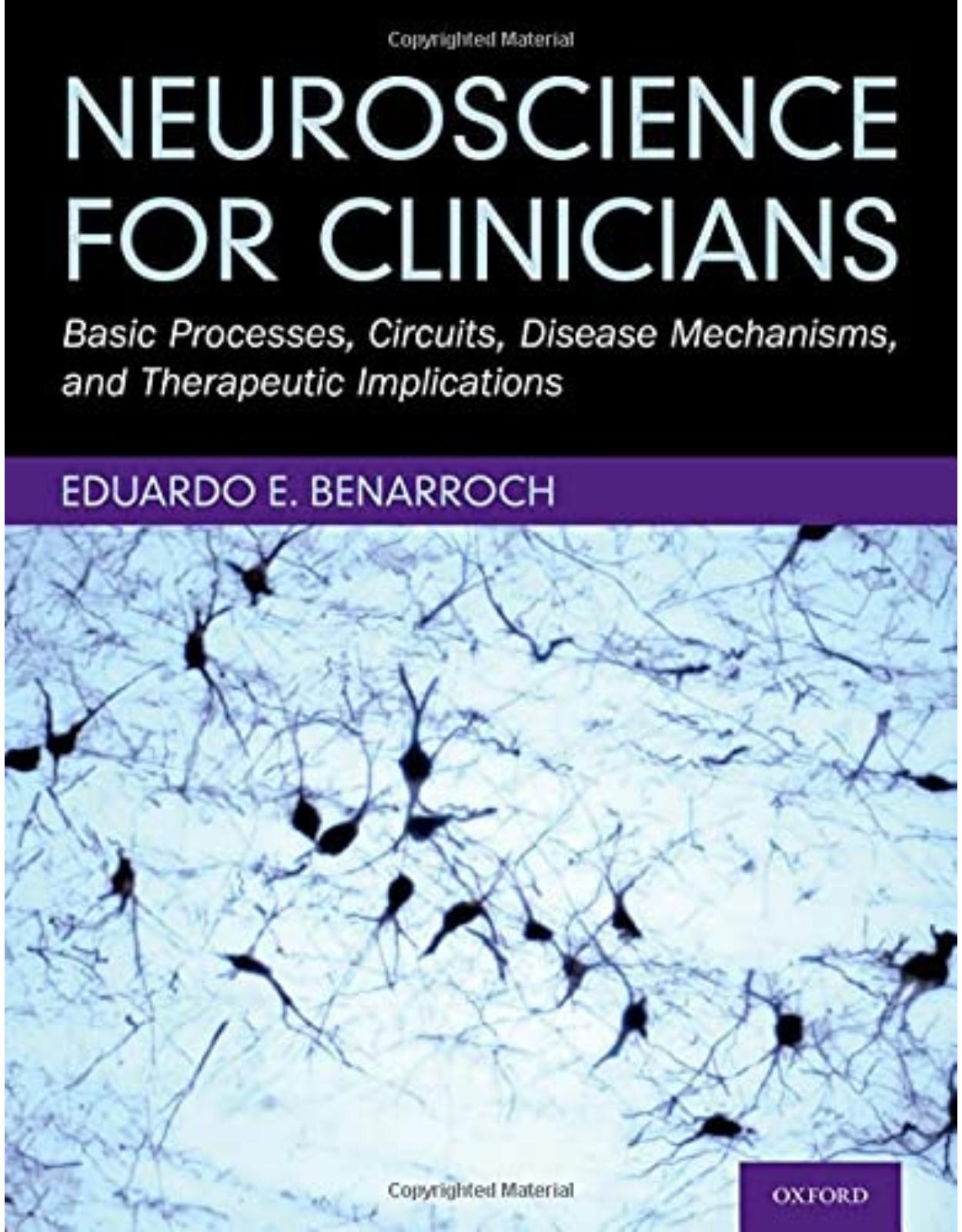
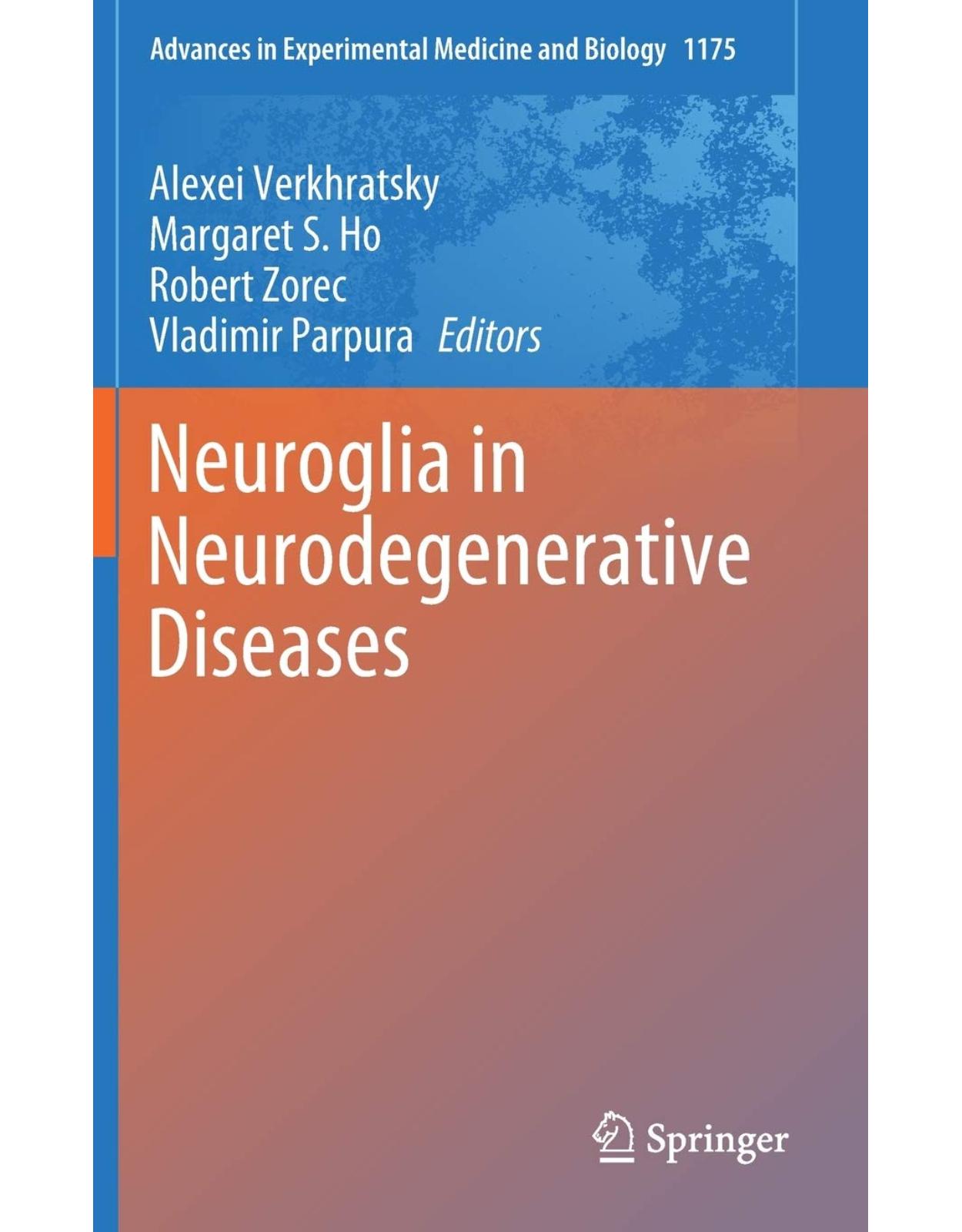
Clientii ebookshop.ro nu au adaugat inca opinii pentru acest produs. Fii primul care adauga o parere, folosind formularul de mai jos.